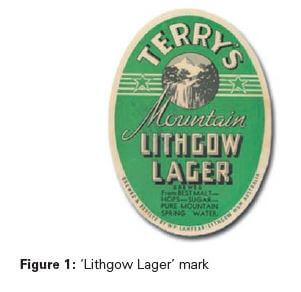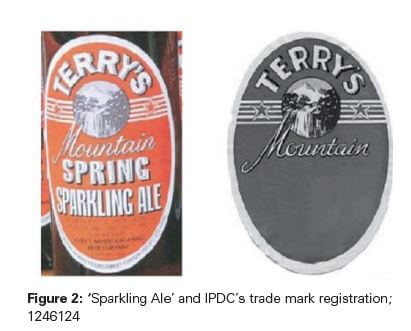The expression ’use it or lose it‘ is often applied to retaining learned skills, but can also apply to retaining rights, particularly rights obtained by trade mark registration.
In Australia, owners must use their mark within five years of applying for the mark. Once that five year period expires, any person can apply to remove the registration on the basis that it was not used during the period of three years, commencing three years and one month prior to filing the application for removal. The onus is on the owner to demonstrate that the mark (possibly with additions or alterations that do not affect the identity of the mark) was used during that period. Use may be by a third party, but the owner must ‘authorise’ such use.
In the case of Intellectual Property Development Corporation Pty Ltd v Malina Schindler and Adrian Schindler [2016] ATMO 103, Intellectual Property Development Corporation Pty Ltd (IPDC) owned a
registered trade mark comprising a label with the words ‘TERRY’S MOUNTAIN’ and a landscape device for ‘Beer’. Malina and Adrian Schindler (the Schindlers) applied to remove the mark for non-use on 21 August 2014, more than five years after it was filed, presumably because it had been cited against their application to register their mark (Figure 1) for beer, among other goods.
 Both parties had based their marks on a label previously used by a defunct entity called Terry’s Brewery, however neither party claimed to have rights derived from that earlier use. The Schindlers had unsuccessfully opposed the IPDC mark prior to registration.
Both parties had based their marks on a label previously used by a defunct entity called Terry’s Brewery, however neither party claimed to have rights derived from that earlier use. The Schindlers had unsuccessfully opposed the IPDC mark prior to registration.
To defend the non-use action, IPDC had to demonstrate use of the registered mark during the three year period 21 July 2011 to 21 July 2014. IPDC claimed that they had used the mark during that period in relation to a range of beers; a ‘Sparkling Ale’ (Figure 2), a ‘Pale Ale’, and a lager sold as ‘Lithgow Lager’, with red, blue and green labels, respectively. These beers were sold through a related entity, Thunder Road Brewery. For the purpose of comparison, the registered mark and the red label were juxtaposed in the Hearing Officer’s decision (Figure 2).

Sharp-eyed readers will note that the top part of the label as used is almost identical to IPDC’s registration. There are some minor alterations to the font style of the words TERRY’S and MOUNTAIN and the shape of the stars. However, the lower part of the label included the words ‘SPRING’; ‘SPARKLING ALE’, ‘PALE ALE’ or ‘LITHGOW LAGER’ and the text:
‘BREWED & BOTTLED UNDER LICENSE
WITH THE FINEST MALT, HOPS AND
PURE WATER BY
TERRY’S MOUNTAIN SPRING
BEER COMPANY
5.2% ALC/VOL 330ml’
At the hearing, the Hearing Officer found that there had been trade mark use of the red label, but the other labels had only been used on products given away to staff, which was not use ‘in the course of trade’.
The Hearing Officer did not accept submissions made by the Schindlers that the use by the Thunder Road Brewery was not properly authorised. However, he found that while the alterations to the font used for TERRY’S and MOUNTAIN did not affect the identity of the trade mark, the addition of the word SPRING in the labels relied upon by IPDC did affect the identity of the mark. While accepting that many of the other added words were merely descriptive, the conceptual differences between ‘MOUNTAIN’ and ‘MOUNTAIN SPRING’ meant that the marks were not substantially identical. The differences were further emphasised by the depictions of both a mountain and a waterfall (a mountain spring) in the landscape appearing in the mark. Finally, the difference was also emphasised by the reference to ‘Terry’s Mountain Spring Beer Company’.
As the evidence did not show use of the registered mark, the Hearing Officer found that IPDC had not demonstrated the necessary use, and the registration was directed to be removed.
As Thunder Road Brewery somewhat famously attempted to remove over 50 ‘heritage’ beer marks owned by CUB Pty Ltd for non-use, it is perhaps surprising that the following lessons from that largely
unsuccessful attempt do not appear to have been taken to heart:
- Use a registered trade mark in the form in which it is registered. If a mark is modified, or ‘refreshed’, consider applying to register the new form of the mark.
- Make sure that the mark is used ‘in the course of trade’. Giveaways to customers build goodwill and may still be in the course of trade, however giveaways to staff will probably not be use ‘as a
trade mark’. - If a mark is being used by an authorised user, ensure that the terms of use are clear. If the owner and user are related, ensure that the nature of that relationship is shown in the evidence of use, and that it is the owner who controls the user, and not the other way around.
- If successful in obtaining registration despite an opposition, be especially vigilant regarding use of the mark. It is not unusual for opponents to make a second attack some years later as applicants for removal!

